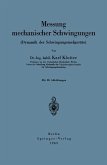By bringing together various ideas and methods for extracting the slow manifolds, the authors show that it is possible to establish a more macroscopic description in nonequilibrium systems. The book treats slowness as stability. A unifying geometrical viewpoint of the thermodynamics of slow and fast motion enables the development of reduction techniques, both analytical and numerical. Examples considered in the book range from the Boltzmann kinetic equation and hydrodynamics to the Fokker-Planck equations of polymer dynamics and models of chemical kinetics describing oxidation reactions. Special chapters are devoted to model reduction in classical statistical dynamics, natural selection, and exact solutions for slow hydrodynamic manifolds. The book will be a major reference source for both theoretical and applied model reduction. Intended primarily as a postgraduate-level text in nonequilibrium kinetics and model reduction, it will also be valuable to PhD students and researchers in applied mathematics, physics and various fields of engineering.
From the reviews of the first edition:
"The book presents an overwhelmingly rich display of deep ideas in the theory and applications of invariant manifolds for the dynamical systems appearing in physical and chemical kinetics, as well as in biology. An example of a gem of a result and exposition is provided by the stunningly beautiful treatment of systems with inheritance in Chapter 14, combining mathematical rigor with a wide display of concrete applications. The book should become an all time classic." -- Mikhail Shubin, Matthews Distinguished University Professor Northeastern University, Boston, USA
"This book is a treasure trove filled with a variety of ideas on the reduced description of kinetics. The authors not only summarize their pioneering work - at the heart of which is the "invariant manifold method" - but also put it nicely into perspective and add new material (e.g., "invariant grids", "films") to compose a well-balanced picture of physical and chemical kinetics. The elegant idea of "films" consisting of macroscopically definable nonequilibrium states offers new opportunities for a deeper understanding of irreversibility. 25 years of experience in the field are condensed into deep physical insight, powerful mathematical techniques, and a wealth of illustrating examples and useful references." -- Hans Christian Öttinger, Professor of Polymer Physics, ETH Zürich
"... a very remarkable, and much needed, introduction to this fascinating subject, along with a systematic treatment of advanced topics which the authors themselves have largely contributed to develop." -- Sauro Succi, Research Director, Istituto Applicazioni Calcolo
"The great strength and unique feature of the book is the amazing wealth of practical and concrete examples which truly show 'ideas in action'! Systems as diverse as hydrodynamic turbulence, chemical reactions, polymer flows, and even quantum systems in Wigner's representation, are all embraced by the powerful spectrum of constructive methods presented in the book. ...
The authors are highly regarded experts in the field, and their remarkable monograph makes a very valuable and timely contribution to modern non-equilibrium statistical mechanics at large. It will be a very useful and enjoyable addition to the library of graduate students and professionals in the very many disciplines - such as applied math, physics, chemistry and biology - that share non-equilibrium statistical mechanics as a common conceptual background for modeling complex system dynamics at large. ...
Providing criteria to identify, construct and classify the slow invariant manifolds of complex systems, thereby offering a quantitative tool for the investigation of non-equilibrium statistical systems, is a task of the utmost importance in modern non-equilibrium statistical mechanics. This task makes up the central core of the very remarkable monograph by Gorban and Karlin." -- From Bulletin of the London Mathematical Society 38 (2006
"'Invariant Manifolds for Physical and Chemical Kinetics' is a valuable book to have and to study for everyone who is interested and works in the multi-faceted area of kinetics ... . The reader may take different tours the authors offer to read their book: the short or long formal roads, or the short and long Boltzmann roads, or the nonequilibruim thermodynamic road, or even the short Grad road. Any road the reader might take would be interesting, useful and joyful ... ." -- Eugene Kryachko, Zentralblatt MATH, Vol. 1086, 2006
"The book presents an overwhelmingly rich display of deep ideas in the theory and applications of invariant manifolds for the dynamical systems appearing in physical and chemical kinetics, as well as in biology. An example of a gem of a result and exposition is provided by the stunningly beautiful treatment of systems with inheritance in Chapter 14, combining mathematical rigor with a wide display of concrete applications. The book should become an all time classic." -- Mikhail Shubin, Matthews Distinguished University Professor Northeastern University, Boston, USA
"This book is a treasure trove filled with a variety of ideas on the reduced description of kinetics. The authors not only summarize their pioneering work - at the heart of which is the "invariant manifold method" - but also put it nicely into perspective and add new material (e.g., "invariant grids", "films") to compose a well-balanced picture of physical and chemical kinetics. The elegant idea of "films" consisting of macroscopically definable nonequilibrium states offers new opportunities for a deeper understanding of irreversibility. 25 years of experience in the field are condensed into deep physical insight, powerful mathematical techniques, and a wealth of illustrating examples and useful references." -- Hans Christian Öttinger, Professor of Polymer Physics, ETH Zürich
"... a very remarkable, and much needed, introduction to this fascinating subject, along with a systematic treatment of advanced topics which the authors themselves have largely contributed to develop." -- Sauro Succi, Research Director, Istituto Applicazioni Calcolo
"The great strength and unique feature of the book is the amazing wealth of practical and concrete examples which truly show 'ideas in action'! Systems as diverse as hydrodynamic turbulence, chemical reactions, polymer flows, and even quantum systems in Wigner's representation, are all embraced by the powerful spectrum of constructive methods presented in the book. ...
The authors are highly regarded experts in the field, and their remarkable monograph makes a very valuable and timely contribution to modern non-equilibrium statistical mechanics at large. It will be a very useful and enjoyable addition to the library of graduate students and professionals in the very many disciplines - such as applied math, physics, chemistry and biology - that share non-equilibrium statistical mechanics as a common conceptual background for modeling complex system dynamics at large. ...
Providing criteria to identify, construct and classify the slow invariant manifolds of complex systems, thereby offering a quantitative tool for the investigation of non-equilibrium statistical systems, is a task of the utmost importance in modern non-equilibrium statistical mechanics. This task makes up the central core of the very remarkable monograph by Gorban and Karlin." -- From Bulletin of the London Mathematical Society 38 (2006
"'Invariant Manifolds for Physical and Chemical Kinetics' is a valuable book to have and to study for everyone who is interested and works in the multi-faceted area of kinetics ... . The reader may take different tours the authors offer to read their book: the short or long formal roads, or the short and long Boltzmann roads, or the nonequilibruim thermodynamic road, or even the short Grad road. Any road the reader might take would be interesting, useful and joyful ... ." -- Eugene Kryachko, Zentralblatt MATH, Vol. 1086, 2006








